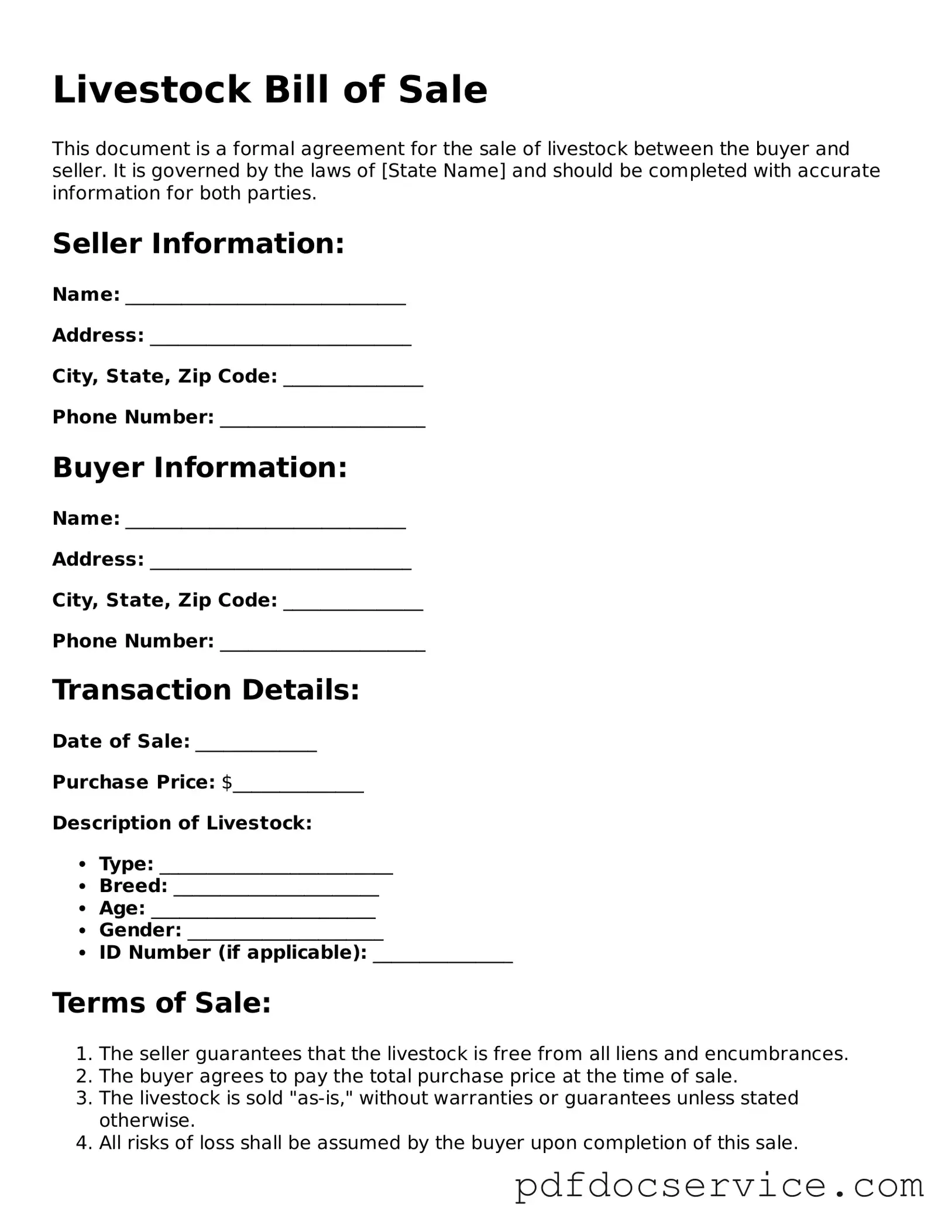A Livestock Bill of Sale form is a legal document that records the transfer of ownership of livestock from one party to another. This form typically includes details about the animals being sold, the seller and buyer's information, and the terms of the sale. It serves as proof of the transaction and can be important for both parties in case of disputes or for record-keeping purposes.
The Livestock Bill of Sale form usually contains the following information:
-
The date of the sale
-
Details of the livestock being sold, including species, breed, age, and identification numbers (if applicable)
-
The seller's name, address, and contact information
-
The buyer's name, address, and contact information
-
The sale price and payment terms
-
Any warranties or guarantees provided by the seller
Why is it important to use a Livestock Bill of Sale?
Using a Livestock Bill of Sale is important for several reasons. First, it provides a clear record of the transaction, which can help prevent misunderstandings between the buyer and seller. Second, it can protect both parties in case of legal disputes. Lastly, it may be required for certain regulatory purposes, such as registering livestock with state or federal agencies.
Notarization is not always required for a Livestock Bill of Sale, but it can add an extra layer of protection. Having the document notarized can help verify the identities of both parties and confirm that they willingly signed the agreement. Check local laws to determine if notarization is necessary in your state.
Yes, the Livestock Bill of Sale form can be used for various types of livestock, including cattle, sheep, goats, pigs, and horses. However, it is essential to ensure that the form accurately reflects the specific details of the animals being sold, as different species may have different regulations and requirements.
You can obtain a Livestock Bill of Sale form from several sources. Many agricultural organizations and state departments of agriculture provide templates online. Additionally, you can find customizable forms through legal document websites or consult with a local attorney to create a tailored document that meets your needs.
